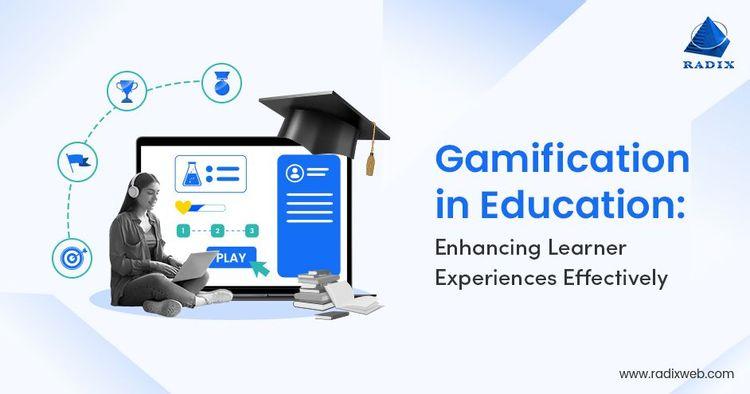The Future of Educational Gamification: Innovations Shaping learning tomorrow
The landscape of education is undergoing a dramatic conversion, powered by advances in educational gamification. As learning environments become more tech-savvy and learner-centric, gamification strategies are redefining engagement, motivation, and knowledge retention for students of all ages. In this thorough guide, we’ll explore what the future holds for educational gamification, highlight breakthrough innovations, examine real-world case studies, and provide actionable tips for educators and institutions ready to embrace these trends. Whether you’re a teacher, administrator, parent, or simply passionate about educational technology, this article will shed light on the cutting-edge developments that are shaping learning tomorrow.
What Is Educational Gamification?
Educational gamification refers to the integration of game-design elements and principles—such as points, leaderboards, badges, and story-driven challenges—into non-game educational settings. Its primary goal is to boost learner motivation, sustain engagement, and foster a deeper, more experiential understanding of course material. In a rapidly evolving digital world, gamification is quickly becoming an essential strategy for modern educators.
Key Benefits of Gamification in Learning
- Increased Student Engagement: Interactive challenges and rewards keep learners motivated to participate and progress.
- Enhanced Knowledge Retention: Active involvement and immediate feedback enable better recall and application of concepts.
- Personalized Learning Experiences: Gamified platforms often allow for adaptive pathways tailored to individual student’s pace and proficiency.
- Advancement of Soft Skills: Through collaboration, problem-solving, and decision-making in game-like scenarios, students acquire essential 21st-century skills.
- Instant Feedback and Assessment: Real-time scoring and feedback help learners identify areas for improvement rapidly.
Innovations Shaping the Future of Educational Gamification
As we look ahead, several innovative trends are poised to redefine gamified learning experiences in the classroom and beyond:
1. Artificial Intelligence and Adaptive Learning
AI-powered educational games can analyze learner behavior and instantly adjust difficulty, content, and feedback, ensuring a truly adaptive journey. This means every student’s path is unique, maximizing engagement and learning outcomes.
2. Augmented Reality (AR) and Virtual Reality (VR)
Immersive technologies like AR and VR are transporting students into dynamic,interactive 3D environments—whether it’s historical simulations,science labs,or language experiences. These innovations turn abstract concepts into vivid, actionable scenarios, making learning truly unforgettable.
3. Blockchain Credentials and digital Badges
Blockchain technology is enabling secure, verifiable achievements and digital badges that follow students beyond traditional report cards.These credentials showcase skills, micro-certifications, and progress, adding real-world value to gamified education systems.
4. Social and Collaborative Game Mechanics
The future of gamification isn’t a solo journey. Peer competition,collaborative missions,and community-driven challenges foster teamwork,communication,and peer learning,making the educational experience richer and more interconnected.
5. Narrative-Driven Learning Games
Storytelling is a powerful motivator. Games that tie lessons to engaging stories and quests help contextualize learning and promote emotional investment,leading to higher retention and enthusiasm.
real-World Case Studies: Gamification Success Stories
Kahoot!: Reinventing Classroom Engagement
Kahoot! is a globally recognized platform that uses quizzes and interactive challenges to transform traditional assessments into exciting classroom activities. Studies show that regular use of Kahoot! increases student participation, sharpens memory recall, and energizes review sessions.
Classcraft: Social-Emotional Learning in Action
Classcraft incorporates role-playing game elements into daily lessons,emphasizing teamwork,empathy,and social skills. Teachers have reported a notable decrease in disruptive behaviors and a boost in classroom cooperation since implementing this platform.
Duolingo: Gamification in Language Learning
With over 500 million users, Duolingo is a prime example of gamified learning at scale. Its use of streaks, XP points, and competitive leaderboards keeps users returning daily, resulting in remarkable language acquisition outcomes.
Practical Tips for Educators Embracing Gamification
- Start Small: Integrate simple game mechanics like point systems or digital badges to build familiarity and excitement.
- Align Games with Learning Objectives: Ensure that each gamified element directly reinforces key concepts and skills relevant to the curriculum.
- Gather Student Feedback: Regularly solicit learners’ opinions to identify what works—and adapt your approach accordingly.
- Encourage Collaboration: Foster social learning by incorporating team-based challenges or peer-to-peer problem-solving.
- Monitor Progress and adjust: Use analytics tools to track engagement and achievement, refining your strategy over time.
Challenges and Considerations
While the future of educational gamification is radiant, there are important considerations for educators and administrators:
- Balancing Fun and Educational Value: Ensure that gameplay elements enhance, not distract from, genuine learning.
- Addressing Equity and Access: Not all students have equal access to devices or high-speed internet—a challenge that must be addressed in digital implementation.
- Overcoming Resistance to Change: Training and support are critical for educators new to gamified teaching approaches.
Future Trends in Educational Gamification
Looking ahead, here are some trends that will likely transform gamified education over the next decade:
- Integration with Learning Management Systems (LMS): Seamless gamification features within existing platforms will make adoption easier and more effective.
- personalized Data Dashboards: Students and educators will access real-time performance analytics, tailoring experiences to individual needs.
- Global game-Based Learning Communities: Cross-border collaborations,challenges,and tournaments will connect learners worldwide.
- Emphasis on Holistic Development: Future games will increasingly focus on teaching empathy, resilience, and critical thinking—not just academic achievement.
First-Hand Experience: Educators and student Voices
Many teachers report higher enthusiasm and improved academic results after incorporating gamified activities into their classrooms. Students frequently enough share positive feedback,especially regarding the sense of accomplishment from earning badges and progressing through levels. One high school teacher in Texas noted, “After introducing weekly gamified quizzes, absenteeism dropped and my students’ test scores improved by 15% on average.” These first-hand experiences underline the powerful potential of educational gamification.
Conclusion: Embracing the Gamified Future of Learning
The future of educational gamification is full of promise, blending advanced technology, innovative game design, and evidence-based teaching practices to create more dynamic, engaging, and inclusive learning environments.As these innovations continue to evolve, educators, schools, and edtech companies must collaborate to address challenges and maximize the benefits.
By embracing the latest gamification trends in education, we can empower learners to become more motivated, self-directed, and triumphant—nurturing a generation ready for whatever tomorrow brings.

